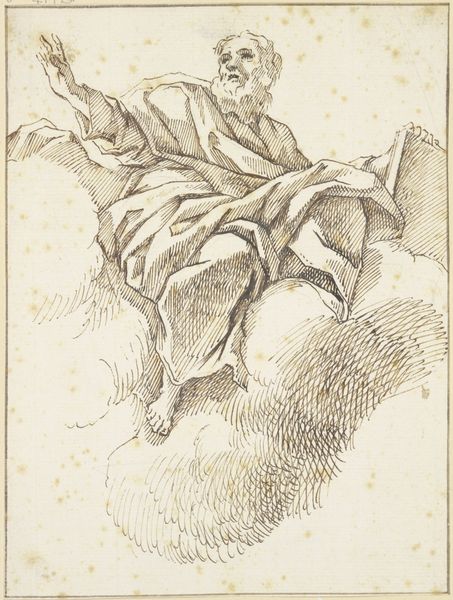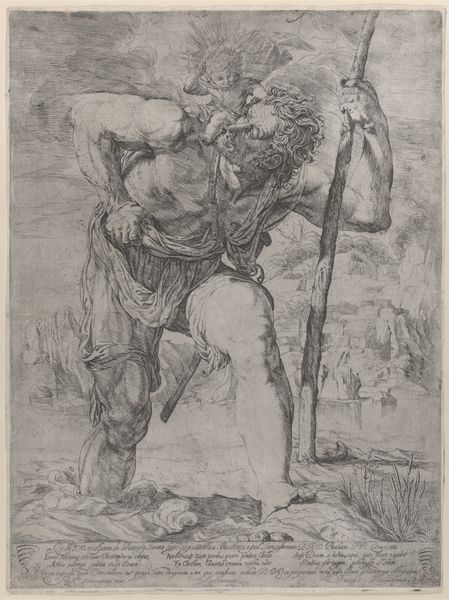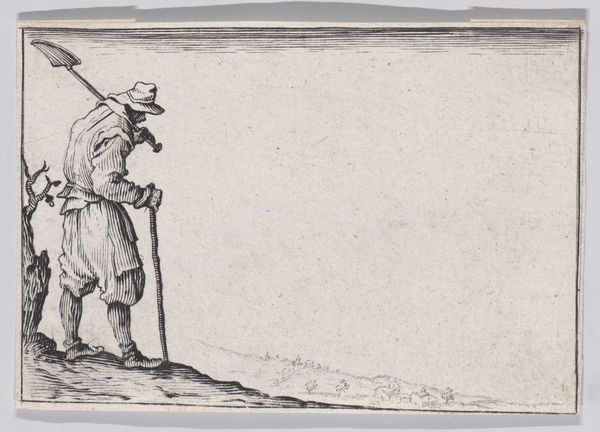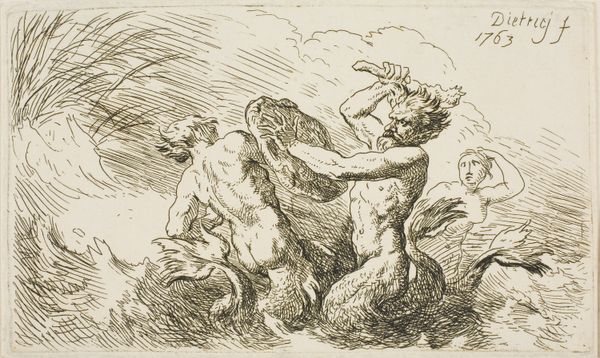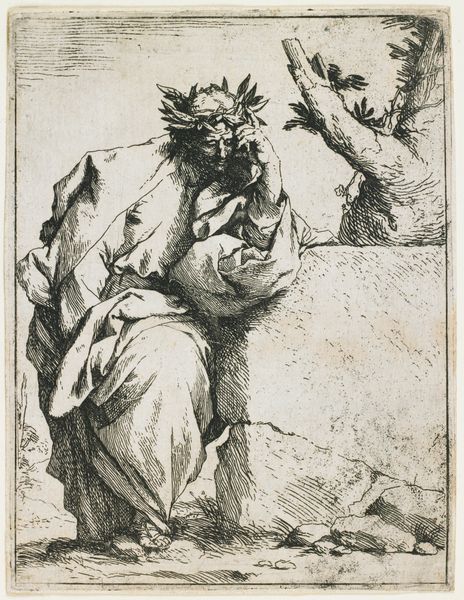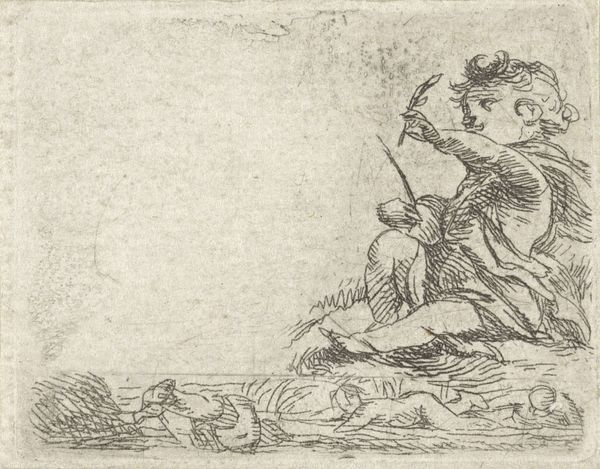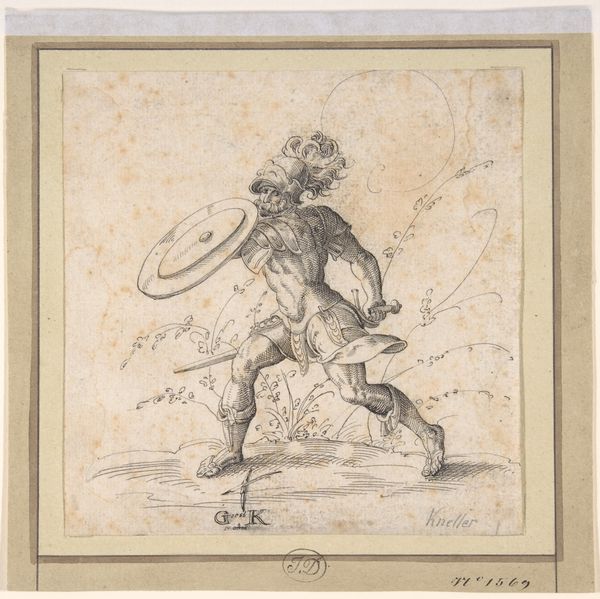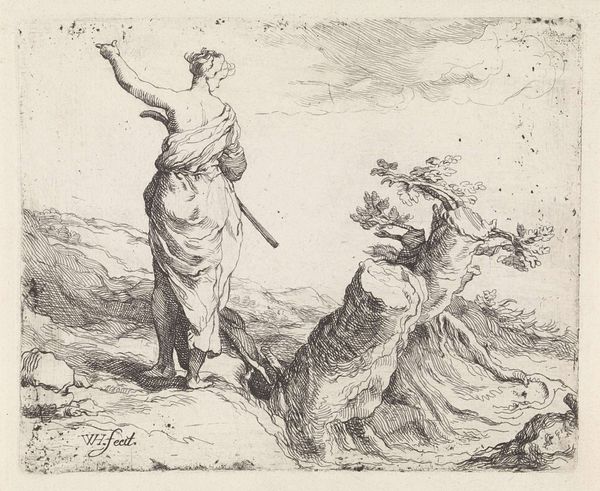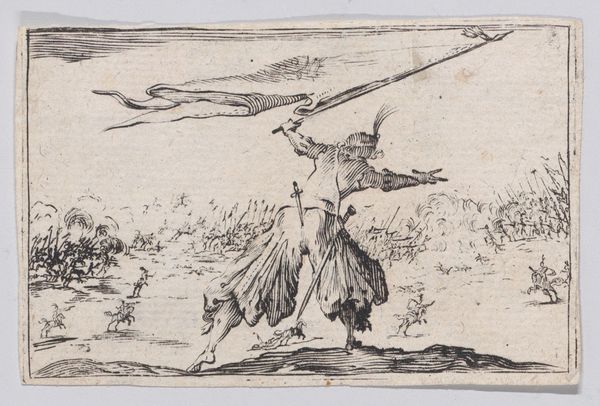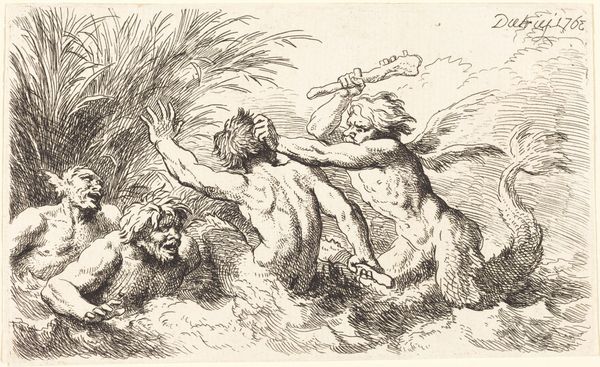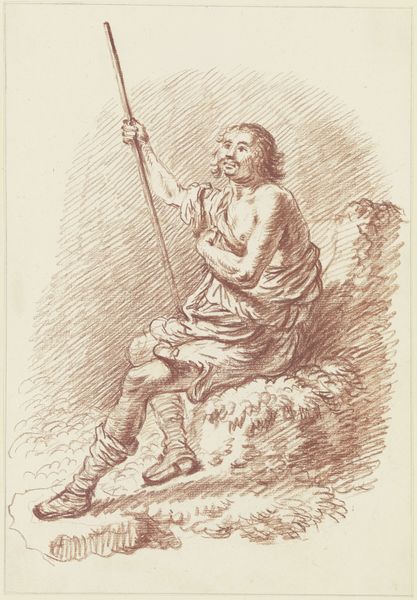
drawing, ink, pen
#
portrait
#
drawing
#
ink drawing
#
pen sketch
#
etching
#
ink
#
pen-ink sketch
#
pen
#
history-painting
Dimensions: height 250 mm, width 346 mm
Copyright: Rijks Museum: Open Domain
Editor: So, here we have "Seated Warrior with Halberd," an ink drawing by Alexander Ver Huell, made sometime between 1832 and 1897. It looks like a pen sketch. The warrior has such a dejected, almost defeated posture. What do you see in this piece? Curator: I see a powerful critique of militarism and its effects on the individual. While seemingly a historical study, consider the timing. Ver Huell, living through periods of immense social change and colonial expansion, might be using this warrior figure to comment on the burdens and disillusionment of soldiers in his own time. What does it mean to depict a warrior in repose, burdened rather than triumphant? Editor: That's interesting! I was so focused on the visual elements, like the hatching and the way he used ink to create depth. I hadn’t considered that this could be a broader commentary. Curator: The medium itself—ink, a tool of documentation and bureaucracy—adds another layer. Is this drawing a celebration of military prowess or a somber reflection on the individual caught within larger power structures? Look at the figure’s posture: slumped, almost melancholic. Where is the glory? Editor: Now I see the tension. The detailed rendering suggests respect for the warrior's craft, but the overall mood implies a condemnation of violence or, at least, its psychological toll. Curator: Exactly! And it encourages us to consider the ongoing struggles of those who serve, often rendered invisible by romantic narratives of war. How do we reconcile historical depictions of soldiers with contemporary understandings of trauma and its lasting impacts? Editor: It makes you rethink the narratives we inherit. Thanks for pointing out those connections! Curator: Absolutely. It's through these dialogues, questioning and re-evaluating, that art truly becomes a mirror reflecting our society and challenging our perspectives.
Comments
No comments
Be the first to comment and join the conversation on the ultimate creative platform.

